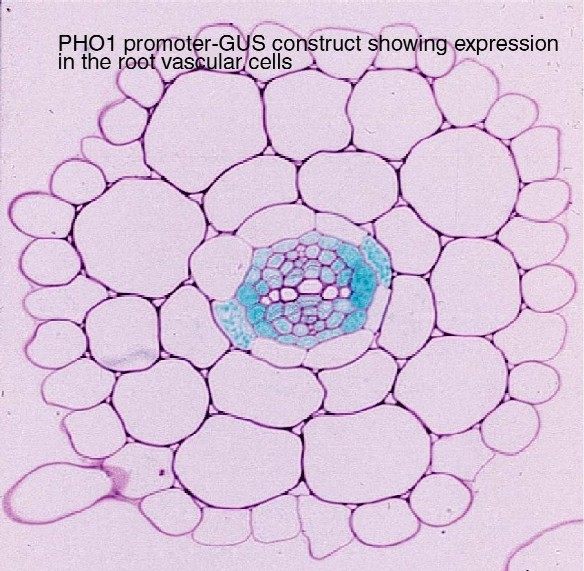The main topic of research of our laboratory is centered on phosphate transport and metabolism across the plant and fungal kingdoms. These research projects are addressed using the tools of molecular and cell biology, biochemistry and genomics, with Arabidopsis and Laccaria bicolor as the main plant and fungal models, respectively, but with some projects also using the yeast Saccharomyces cerevisiae.
1. Phosphate transport and metabolism
Phosphate is an essential nutrient for all living organisms because it is an integral component of several important biological molecules and plays a key role in the regulation of numerous pathways. In plants, phosphate is also one of the main nutrients that limit plant growth in both natural environments and the agricultural context. The PHO1 protein was first identified in Arabidopsis as the principal phosphate exporter expressed in the root xylem vessel where it contributes to the long-distance transfer of phosphate from roots to shoots. PHO1 and its homologues are also expressed in a wide variety of tissues and are implicated in numerous aspects of plant biology, including guard cell response to abscisic acid, Pi transfer to the developing seeds and the control of the phosphate-deficiency signaling transduction cascade. We are exploring the role of PHO1 orthologues and of key genes involved in Pi homeostasis in in various plants, such as the legume Medicago truncatula and the model ectomycorrhizal fungus Laccaria bicolor. Our research on the adaptation of plants to phosphate deficiency led us to study the implication of non-coding RNAs in nutrient stress. More recently, our work focused on phosphate transport in the Golgi though the identification of the ERD1 protein. Our next principal goal is to understand the molecular details of the mode of action of PHO1, ERD1 and other transporters in phosphate homeostasis in the Golgi and the endomembrane system.

